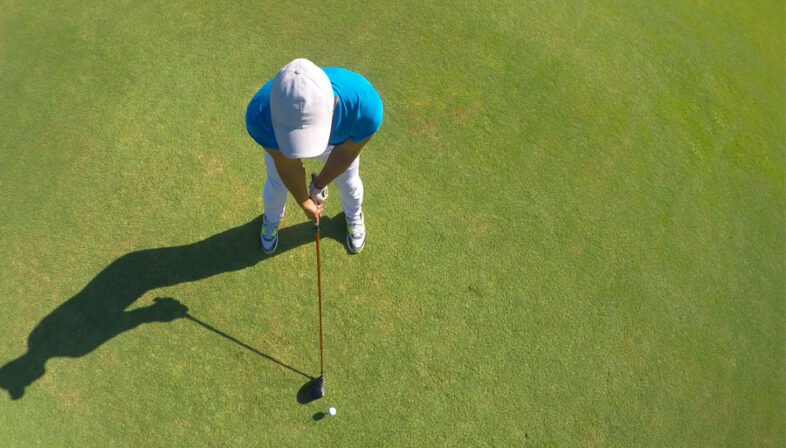Have you ever found yourself standing on the tee, excited about your drive, only for it to veer off to the right (or left, depending on your perspective)? If you’ve struggled with a slice, wondering is there a driver that fixes a slice, you’re not alone. Many golfers experience this frustrating issue, and the good news is that there are solutions to help you regain control of your shots.
Understanding the Slice in Golf
A slice is one of the most common problems that golfers face. It’s characterized by a shot that curves dramatically to the right (for a right-handed golfer). But what causes this frustrating phenomenon?
What Causes a Slice?
A slice is primarily caused by two main factors: clubface angle and swing path.
- Clubface Angle: If your clubface is open at impact, it can lead to a slice. An open clubface will spin the ball in a direction that results in a slice.
- Swing Path: The path your club takes can also contribute to a slice. If your swing path is outside-in (meaning the club travels from outside the target line to inside as it approaches the ball), the result is likely to be a slice.
The Impact of Equipment
Many golfers wonder if the equipment they’re using could be affecting their slice. This is where the idea of using a driver that fixes a slice comes in. But does such a club really exist?
Can a Driver Fix a Slice?
While no driver can completely eliminate a slice on its own, some drivers are designed with technology that can help reduce the effects of a slice. It’s important to understand how these features work.
Features to Look For
When searching for a driver to tackle the slice problem, here are some features you might want to consider:
- Adjustable Weights: Some drivers have adjustable weights that can help you tailor the club’s balance to suit your swing. Moving weight to the heel can promote a more closed clubface at impact, helping to reduce slicing.
- Offset Design: An offset driver is designed with the clubface set back from the hosel, allowing for a closed clubface at impact. This can help to prevent the open face that often causes a slice.
- Larger Sweet Spot: A driver with a larger sweet spot can minimize the effect of mishits, which can exacerbate a slice. Look for clubs that offer forgiving designs.
- Lower Loft Options: Depending on your swing speed, a lower loft driver can sometimes help mitigate the effect of a slice. Higher loft can often exacerbate the slice for certain players.
Brands and Models Worth Considering
Here are some brands and their popular models that are known for helping with slice reduction:
| Brand | Model | Features |
|---|---|---|
| TaylorMade | SIM2 Max | Adjustable weights and large sweet spot |
| Callaway | Big Bertha B21 | Offset design and forgiving face |
| Ping | G425 Max | High MOI and adjustable settings |
| Titleist | TSi3 | Improved aerodynamics and low-spin options |
Keep in mind that while these drivers can offer options to help with slicing, the most significant improvements will come from your swing technique.
Improving Your Swing Technique
Choosing the right driver is just one part of reducing your slice. Even the best equipment can’t compensate for a poor swing.
Grip Fundamentals
Your grip plays a crucial role in how the clubface interacts with the ball.
Proper Grip Positioning
- Alignment: Your hands should be positioned so that the “V’s” formed by your thumbs and index fingers point towards your right shoulder (for right-handed golfers).
- Grip Pressure: Too tight of a grip can restrict your wrist movement, leading to slicing. Aim for a grip pressure that feels secure yet relaxed.
Stance and Alignment
Your stance sets the stage for your entire swing. An improper stance can drastically affect how you hit the ball.
Key Points for a Better Stance
- Feet Position: Your feet should be shoulder-width apart for stability, and your weight should be distributed evenly across both feet.
- Ball Position: Placing the ball too far forward can lead to an open clubface at impact. Experiment with positioning the ball just inside your left heel to ensure better alignment.
Swing Path Adjustments
Adjusting your swing path is essential in combating the slice.
How to Practice
- Train Your Inside-Out Path: Focus on bringing the club back on the inside and following through on the outside. Placing a headcover or object just outside the path can guide you.
- Visualize Your Swing: Picture a more circular swing path rather than a straight line. This visualization can help you focus on a more natural arc.
The Role of Tempo
Maintaining a consistent tempo is vital in achieving reliable shot patterns.
Tips for Developing Good Tempo
- Practice with a Metronome: Start slow and engage in regular practice. This helps refine your timing and rhythm.
- Slow Down Your Backswing: Rushing can lead to improper clubface alignment. Focus on a smooth and controlled backswing to set up a better impact.
The Importance of Pre-Impact Position
Your setup before impact significantly influences the shot you’ll hit.
Key Elements to Pay Attention To
- Posture: Ensure a slight bend in the knees and hips. A good posture will allow for a more consistent swing.
- Eye on the Ball: Keeping your head down and focused on the ball until contact is vital for solid hits.
Balance Is Also Part of Your Technique
After your swing, be sure to let your body naturally follow through to maintain balance and frame your finish position properly.
Addressing the Slice with Drills
Integrating drills into your practice routine can be highly effective in correcting a slice.
Useful Drills to Consider
| Drill | Purpose |
|---|---|
| Toe Tap Drill | Helps develop a proper swing path and release |
| Inside-Out Swing Drill | Encourages the right swing path to counter a slice |
| Target Line Drill | Aims to improve alignment and focus on impact |
Implementing Change in Your Practice
- Set short-term goals: Focus on mastering one drill at a time rather than trying to fix everything at once.
- Seek Feedback: Work with a coach or trusted fellow golfer who can provide constructive feedback on your technique.
The Mental Aspect of Golf
Your mindset can often make or break your game, especially when dealing with frustrating issues like slicing.
Maintaining a Positive Attitude
Staying positive and embracing the learning process is vital.
- Visualization: Envision your perfect shot. This practice can aid in building confidence and reducing anxiety.
- Mindfulness: Engage in mindful breathing or relaxation techniques before stepping up to take your shot. This can help calm pre-shot jitters and allow for better focus.
Staying Committed to Improvement
Remember that golf is a journey, and every golfer experiences ups and downs. Embrace the process of continual learning and improvement.
When to Seek Professional Help
If you’ve tried adjustments to your equipment and swing to no avail, it may be time to seek professional guidance. A golf instructor can help analyze your swing and provide personalized feedback tailored to your needs.
Finding the Right Coach
- Experience: Look for certified professionals with a track record of helping golfers with similar issues.
- Style of Teaching: Ensure their teaching style resonates with you. A good coach should communicate effectively and make you feel comfortable.
Putting it All Together
Addressing a slice is not simply about finding the right driver. It involves understanding your swing mechanics, making necessary adjustments, practicing consistently, and maintaining a positive mindset.
Key Takeaways
- Choose the Right Equipment: Consider using drivers specifically designed to help mitigate a slice.
- Focus on Technique: Your grip, stance, and swing path are just as critical as the clubs you use.
- Engage in Drills: Use targeted drills to improve your swing mechanics.
- Seek Professional Help if Needed: Don’t hesitate to get advice from a golf instructor if you’re feeling stuck.
With time, dedication, and the right mindset, you can conquer your slice and enjoy the game even more. So get out there, practice, and remember that every golfer has faced challenges. Each swing is an opportunity to improve!







